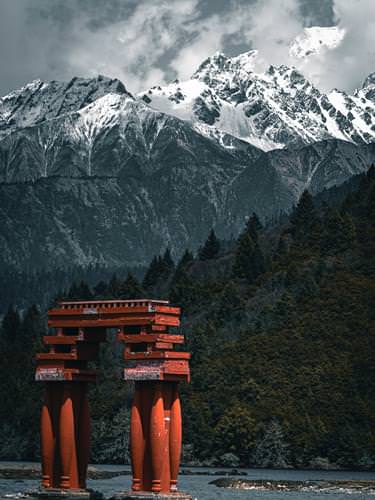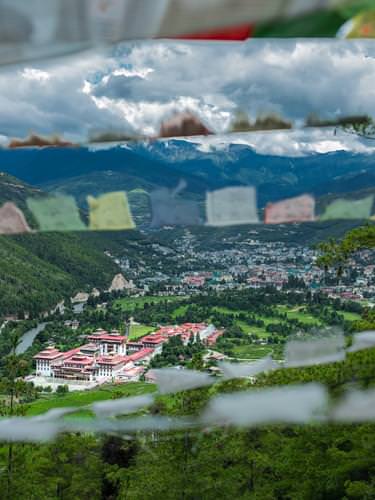RAMA TOURS NEPAL (P) LTD.
Nature, Culture and Adventure
Nepal
- Home
- /
- Nepal
Nepal, a sovereign independent country, is situated in South Asia with China in the north and India in the south, east and west. Nepal is a country of amazing extremes as it is comprised of the world’s highest mountains including Mt. Everest (8848 m), hills, valleys, forested plains, lakes and rivers. This diversity in geography has contributed to diverse climatic condition. It is also the home of hundreds of species of bird, animal and vegetation. Nepal has 185 species of mammal, more than 850 recorded species of birds and over 6500 species of vegetation. The country of Nepal was Kingdom until the Constituent Assembly declared Nepal a Federal Democratic Republic in 2008, abolishing the 240-year-old monarchy. Nepal has a population of around 28 million people made up of 101 ethnic groups. They speak over 92 languages from all regions with diverse culture and religion. Also a remarkable feature of Nepal is the religious homogeneity between the Hindu and Buddhist communities which make up of large portion of population. Nepal enjoys numerous festivals which are liked with religions and are highly celebrated all over the country.
There are various prominent touristic destinations/places to visit in Nepal most of which are listed in World Heritage Sites.
Kathmandu Valley
.jpg)
Kathmandu valley (1350 m) incorporates three major settlements from Kathmandu, Lalitpur and Bhaktapur districts. All have their own distinctive characters with outstanding temples, works of art and architecture and a varied calendar of feasts and festivals. All these three districts boast the highest density of World Heritage Sites to be found anywhere in the World, seven in total. There are many other fascinating settlements in the valley offering their own reasons for being there. They are Kirtipur, Pharping, Budhanilkantha, Thimi, Sankhu, Banepa, Dhulikhel, Panauti, Namobuddha etc. There are 7 prominent touristic places in Kathmandu Valley, which are listed as World Heritage Sites in UNESCO. They are Kathmandu Durbar Square, Patan Durbar Square, Bhaktapur Durbar Square, Changunarayan Temple, Pashupatinath Temple, Baudhanath Stupa and Swoyambhunath Stupa. Besides these World Heritage Sites, Kathmandu Valley offers charming landscape with several Hill Stations like Nagarkot, Dhulikhel, Budanilkantha, Kirtipur etc.
Pokhara Vallery
Pokhara valley (913 m) occupies the central location in Nepal and is dominated by the peaks of Annapurna range and lakes. Its unique setting may be judged from the fact that the town of Pokhara. It is nestled around lovely lake and in a quite mountain valley, with stunning Fishtail (Machhapucchre) Mountain and Annapurna range. The Pokhara Valley is Nepal’s famous destination for hiking, trekking and mountaineering along with adventure sports like paragliding, bungee jumping, zip flyer, ultra-light flight etc.
.jpg)
Royal Nepal National Park, Chitwan
.jpg)
Officially gazetted in 1973, Chitwan (415 m) was the first area in Nepal to be declared a National Park. It is situated in the subtropical low lands of Terai region of Nepal in drainage basin of the Gandaki river and it covers an area an area of 932 square kilometers. The rugged Churia hills, Sal forests, grasslands and river in forests including swamps, sand lakes made by changing river courses, provide an excellent habitants for an unusually rich variety of large mammals. It is one of the last strongholds of tigers and is the only place in Nepal where the great one-horned rhinoceros are found. About 43 species of animals including the endangered one-horned rhino, Royal Bengal tiger, Gharial crocodile, four-horned antelope, striped hyena and the gigantic dolphin are found in the park area. About three hundred varieties of birds including waterfowl, both migratory and residential, can also be seen.
Bandipur
Bandipur (1030 m) is situated on a ridge above the town of Dumre. It features a strong mixture of history, architecture, panoramic views, breathtaking caves and unspoiled landscape. Located at an altitude of 1,030m, Bandipur has been described as a tower of natural sight, providing a spectacular panorama of the entire Annapurna Mountain Range along with the peaks of Dhaulagiri, Manaslu (above 8,000m) and Langtang to the Marsyangdi Valley which is below 500 meters. In addition to breathtaking views of the Himalayas and the Marsyangdi Valley, a visit to the city is an opportunity to get up close and personal with Newar's cultural life that reflects the refined civilization of Kathmandu
.jpg)
Lumbini
.jpg)
Lumbini (150 m) is the birthplace of the Lord Buddha, the apostle of peace and non-violence. Lumbini is a scared place for Buddhist for all over the world, standing on an equal footing with holy places sacred to other world religions and is one of the eight World Heritage Sites listed in UNESCO. The main attractions are spread all over the eight square kilometer sacred garden possessing all historic treasures i.e. the broken Ashoka Pillar, remnants of an old monastery, Mayadevi Temple, sacred pond, holy stone etc.
Bardia National Park
Bardia National Park (415 m), the largest and most undisturbed national park in the lowland region of Terai, is known for abundance of wilderness. Initially a royal hunting reserve, it was later granted the status of a national park. The purpose was to preserve the ecosystem of the region including all wild species. The park encompasses approximate 300 sq. km of Sal forests and riverine grasslands. High elephant grass and dense forests provide home to plenty of animals. Bardia National Park was once an open area of wilderness. Rana rulers of Nepal earmarked it as their royal hunting reserve from 1846 to 1950. In 1976 the region was gazetted as Royal Karnali Wildlife Reserve with an area of 368 sq. km. In 1982, it was rechristened as Royal Bardia Wildlife Reserve including the Babai river valley. It was designated a national park in 1988.
.jpg)
Mustang Valley
.jpg)
Mustang valldy (2010 m – 8167 m) used to be an ancient forbidden kingdom as there used to be the king or Raja of Lo who was called Lo Gyelbu. It is bordered by the Tibetan Plateau at a height of 12,400 ft. and sheltered by some of world's tallest peaks, including Annapurna and Dhaulagiri mountains. It occupies 780 Square miles in the upper valley of the Kali Gandaki River and lies to the north of the main Himalayan mountain range. The great winds whipping up between the Annapurna and the Dhaulagiri have created a dry desert landscape. The capital of Mustang region is Jomsom, which lies at an altitude of 2800 m. Upper Mustang was a restricted demilitarized area until 1992, which makes it one of the most preserved regions in the world due to its relative isolation from the outside world, with a majority of the population still speaking traditional Tibetan languages. The name "Mustang" is derived from the Tibetan word meaning, "Plain of Aspiration. The strict regulations of tourists here have aided in maintaining Tibetan Traditions. Upper Mustang was only opened to foreigners in 1992 (annual quota at present of 1,000 people). The restricted status will also protect its culture and environment to a certain extent. Lo-Manthang is one of the more expensive destinations in Nepal. The relatively high special permit fee is part of the government’s attempt to allow in only high-income tourists into the area. It is a popular area for trekking and can be visited year round (regardless of season). The entire district is included within the Annapurna Conservation Area, the largest protected area of Nepal.
Sagarmatha (Everest) National Park
Sagarmatha (Everest) National Park is situated above the altitude of 3000 m in Everest region. The area was designated a national park in 1976 and encompasses most of the highest peaks (above 6,000 m) including world’s highest peak, Mt. Everest (8,848 m) in the world. Due to altitude range of the park (from less than 3000 m to over 8000 m), the park’s flora and fauna is diverse. The park was declared World Heritage Site in 1979. As the park is lying above 3,000 m, it is comprised of mostly rugged terrain, deep gorges, glaciers and massive rocks. It is the home of wide variety of wildlife which includes more than 118 species of birds, animals such as musk deer, the Himalayan tahr, the goral, the serow, the wolf, and the Himalayan black bear and the forest dominated by pine, oak, silver fir, birch, rhododendron and juniper trees. There are also some endangered species which are rarely seen include snow leopard, red panda, Himalayan monal (Impeyan) which is Nepal's national bird, marmots, pika and marten. The Everest region in Nepal is famous for trekking and mountaineering. It is off course a life time experience to reach the highest point on earth or choose to live out your dream by standing at the foot of Mt. Everest (8,848 m). While trekking, one passes through legendary Sherpa villages that provides an opportunity to have a mix of deeply cultural and spiritual experiences. The trekking in Everest region is physically challenging and will test one’s strength and endurance at its best. The best time to visit Everest region is during the autumn months of October-November and from March-May in spring/summer.
.jpg)



